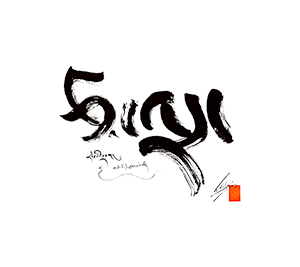Btsan kha bo che
... read more at

Philosophical positions of this person
Karl Brunnhölzl cites ShAkya mchog ldan: "The sugata heart is the naturally pure wisdom, luminous by nature, that pervades everyone from buddhas to sentient beings." Brunnhölzl, K., When the Clouds Part, p. 124.
"Kunga Drölcho provides some context for Dsen Kawoché’s view and for the following excerpts from the latter’s teachings, which Kunga Drölcho compiled as Guiding Instructions on the View of Other-Emptiness: As for the Guiding Instructions on the View of Other-Emptiness, Dsen Kawoché said, "The Kashmiri paṇḍita Sajjana made the following very essential statement: ‘The victor turned the wheel of dharma three times—the first wheel teaches the four realities of the noble ones, the second one teaches the lack of characteristics, and the final one makes excellent distinctions. Among these, the first two do not distinguish between what is actual and what is nominal. The last one was spoken at the point of certainty about the ultimate by distinguishing between the middle and extremes and by distinguishing between phenomena and the nature of phenomena. " Brunnhölzl, K., When the Clouds Part, pp. 142-143.
Karl cites Kongtrul stating, "TOK calls Ngog’s tradition of the Maitreya texts "the oral transmission of explanation" (bshad pa’i bka’ babs) and Dsen’s lineage, "the oral transmission of practice" (sgrub pa’i bka’ babs), saying that they are asserted to hold the views of Madhyamaka and Mere Mentalism, respectively." Brunnhölzl, K., When the Clouds Part, p. 124.
He predates the category, but as Stearns remarks, "Tsen Kawoché . . . is often thought to be the first Tibetan to have taught what later came to be known as the Zhentong view." See Stearns, C., The Buddha from Dolpo, pp. 42–3 and pp. 88–9.
- "These two traditions of rngog and btsan were respectively called the "analytical tradition" (thos bsam gyi lugs) and "meditative tradition" (sgom lugs)." Kano, K., Buddha-Nature and Emptiness, p. 242
- "The lineage through Ngog Lotsāwa is often called "the exegetical tradition of the dharma works of Maitreya" (byams chos bshad lugs), while Dsen Kawoché’s transmissions represent "the meditative tradition of the dharma works of Maitreya" (byams chos sgom lugs)." Brunnhölzl, K., When the Clouds Part, p. 123.
- Kano. K., Buddha-Nature and Emptiness, p. 242, footnote 4. Van der Kuijp via Shakya mchog ldan.
- Mathes cites Gö Lotsāwa as stating, "The followers of the tradition of Tsen (Btsan) maintain that since the luminous nature of mind is the buddha nature, the cause of buddha[hood] is fertile" Mathes, K., A Direct Path to the Buddha Within, p. 33.
- "According to BA, those who follow the tradition of Dsen Kawoché (Tib. Btsan Kha bo che) hold that since the tathāgata heart is the naturally luminous nature of the mind, it is the powerful vital cause of buddhahood. TOK agrees, saying that, according to the Eighth Situpa, the texts in Dsen Kawoché’s lineage accepted a really established, self-aware, self-luminous cognition empty of the duality of apprehender and apprehended to be the powerful vital cause of buddhahood." Brunnhölzl, K., When the Clouds Part, p. 65.
- Karl Brunnhölzl cites ShAkya mchog ldan: "The sugata heart is the naturally pure wisdom, luminous by nature, that pervades everyone from buddhas to sentient beings." Brunnhölzl, K., When the Clouds Part, p. 124.
Other names
- དྲི་མེད་ཤེས་རབ་ · other names (Tibetan)
- dri med shes rab · other names (Wylie)
Affiliations & relations
- Kadam · religious affiliation
- nil · teacher
śrāvaka - The disciples of the Buddha who aspire to attain individual liberation or nirvāṇa. The final goal of the Hearers is to become an arhat, a state in which one has totally eliminated the inner problems of attachment, hatred and ignorance, the main causes for rebirth in this cycle of existence. There are four stages of a śrāvaka path including eight phases. Skt. श्रावक Tib. ཉན་ཐོས། Ch. 聲聞
These are the root verses of the Uttaratantra attributed to Maitreya by the Tibetan tradition.
These are the root verses of the Uttaratantra attributed to Maitreya by the Tibetan tradition.
Mahāmudrā - Mahāmudrā refers to an advanced meditation tradition in Mahāyāna and Vajrayāna forms of Into-Tibetan Buddhism that is focused on the realization of the empty and luminous nature of the mind. It also refers to the resultant state of buddhahood attained through such meditation practice. In Tibet, this tradition is particularly associated with the Kagyu school, although all other schools also profess this tradition. The term also appears as part of the four seals, alongside dharmamūdra, samayamudrā, and karmamudrā. Skt. महामुद्रा Tib. ཕྱག་རྒྱ་ཆེན་པོ།
gzhan stong - The state of being devoid of that which is wholly different rather than being void of its own nature. The term is generally used to refer to the ultimate, or buddha-nature, being empty of other phenomena such as adventitious defiling emotions but not empty of its true nature. Tib. གཞན་སྟོང་
gzhan stong - The state of being devoid of that which is wholly different rather than being void of its own nature. The term is generally used to refer to the ultimate, or buddha-nature, being empty of other phenomena such as adventitious defiling emotions but not empty of its true nature. Tib. གཞན་སྟོང་
neyārtha - Refers to something that is taught for a specific reason, rather than because it is entirely true. Skt. नेयार्थ Tib. དྲང་དོན་
prabhāsvaratā - In a general sense, that which clears away darkness, though it often appears in Buddhist literature in reference to the mind or its nature. It is a particularly salient feature of Tantric literature, especially in regard to the advanced meditation techniques of the completion-stage yogas. Skt. प्रभास्वर Tib. འོད་གསལ་ Ch. 光明
śūnyatā - The state of being empty of an innate nature due to a lack of independently existing characteristics. Skt. शून्यता Tib. སྟོང་པ་ཉིད་ Ch. 空,空門
Yogācāra - Along with Madhyamaka, it was one of the two major philosophical schools of Mahāyāna Buddhism. Founded by Asaṅga and Vasubandhu around the fourth century CE, many of its central tenets have roots in the Saṃdhinirmocanasūtra and the so-called third turning of the dharma wheel (see tridharmacakrapravartana). Skt. योगाचार Tib. རྣལ་འབྱོར་སྤྱོད་པ་ Ch. 瑜伽行派
Madhyamaka - Along with Yogācāra, it is one of the two major philosophical schools of Mahāyāna Buddhism. Founded by Nāgārjuna around the second century CE, it is rooted in the Prajñāpāramitā Sūtras, though its initial exposition was presented in Nāgārjuna's Mūlamadhyamakakārikā. Skt. मध्यमक Tib. དབུ་མ་ Ch. 中觀見
gzhan stong - The state of being devoid of that which is wholly different rather than being void of its own nature. The term is generally used to refer to the ultimate, or buddha-nature, being empty of other phenomena such as adventitious defiling emotions but not empty of its true nature. Tib. གཞན་སྟོང་
gzhan stong - The state of being devoid of that which is wholly different rather than being void of its own nature. The term is generally used to refer to the ultimate, or buddha-nature, being empty of other phenomena such as adventitious defiling emotions but not empty of its true nature. Tib. གཞན་སྟོང་
rang stong - The state of being empty of self, which references the lack of inherent existence in relative phenomena. Tib. རང་སྟོང་
gzhan stong - The state of being devoid of that which is wholly different rather than being void of its own nature. The term is generally used to refer to the ultimate, or buddha-nature, being empty of other phenomena such as adventitious defiling emotions but not empty of its true nature. Tib. གཞན་སྟོང་
gzhan stong - The state of being devoid of that which is wholly different rather than being void of its own nature. The term is generally used to refer to the ultimate, or buddha-nature, being empty of other phenomena such as adventitious defiling emotions but not empty of its true nature. Tib. གཞན་སྟོང་
These are the root verses of the Uttaratantra attributed to Maitreya by the Tibetan tradition.
Uttaratantra - The Ultimate Continuum, or Gyü Lama, is often used as a short title in the Tibetan tradition for the key source text of buddha-nature teachings called the Ratnagotravibhāga of Maitreya/Asaṅga, also known as the Mahāyānottaratantraśāstra. Skt. उत्तरतन्त्र Tib. རྒྱུད་བླ་མ་ Ch. 寶性論
These are the root verses of the Uttaratantra attributed to Maitreya by the Tibetan tradition.
tathāgatagarbha - Buddha-nature, literally the "womb/essence of those who have gone (to suchness)." Skt. तथागतगर्भ Tib. དེ་བཞིན་གཤེགས་པའི་སྙིང་པོ་ Ch. 如来藏
Kadam - The Kadam tradition, which traces its origin to the teachings of Atiśa, was the first of the so-called New Schools of Tibetan Buddhism, traditions which arose during or after the Second Propagation of Buddhism (phyi dar) in the tenth century. Tib. བཀའ་གདམས་


